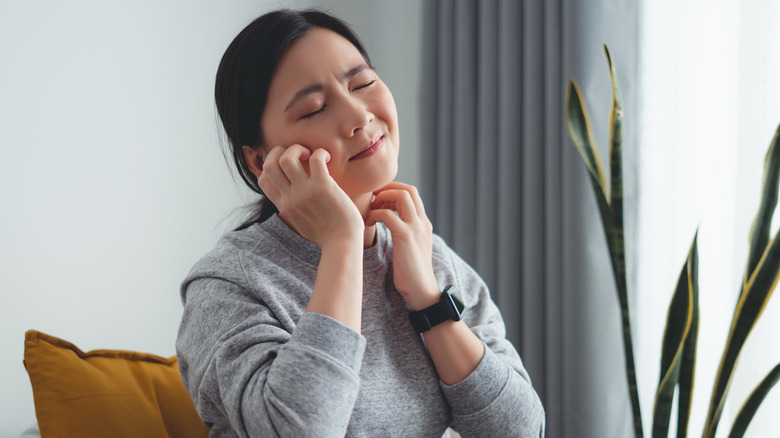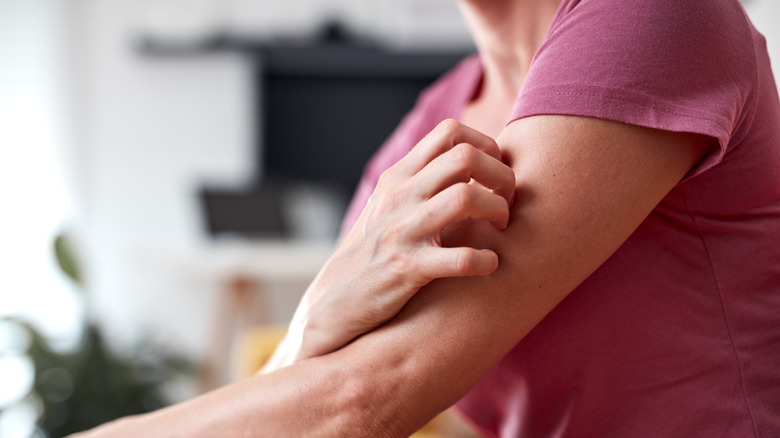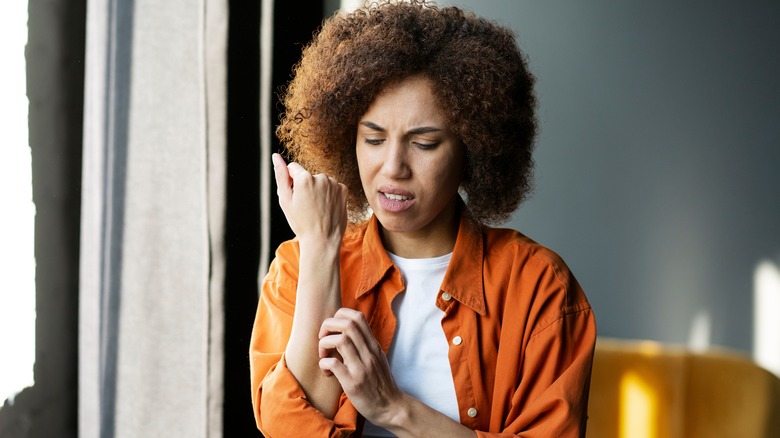What It Means When You Feel An Itch Move Around Your Body
It doesn't take much for our body to detect an itch in need of a good scratch. Think about the last time you felt a single stray hair or a tiny piece of lint tickling your arm. As soon as you become aware of it, it's all you can think about. This makes sense when you consider the fact that our body is home to over 1,000 nerve endings per every square inch of skin, according to Medical News Today.
Our skin's sensitivity serves an important purpose. These nerve endings communicate to the brain that an irritant has been discovered and that the body must respond to get rid of the intruder. To do so, the brain registers these messages as an itch, to which you respond with a scratch. If that stray hair has aggravated only one spot on the skin's surface, then your itch may only be isolated to this singular area. In some cases, however, that itch seemingly jumps from one place to the next. No, you're not imagining it. Rather, when you feel an itch moving around your body, the release of serotonin is usually the cause (via Pfizer).
Why scratching an itch may make you feel itchy elsewhere
Sure, relieving an irritating itch with a thorough scratch initially feels great. This is because the scraping sensation of our nails raking into our skin temporarily redirects our brain's attention away from our itchiness. Our brain then interprets the slight sting of our nails as pain and responds by producing serotonin (via Pfizer). Also known as a "happy hormone," serotonin plays a role in regulating pain perception, according to 2009 research published in the Annual Review of Medicine.
While the release of serotonin may relieve the pain, it was that pain that was distracting us from the itch in the first place. This can intensify itching even more, and suddenly you're right back where you started. In fact, 1 in every 5 people report feeling an itch on a different part of their body after indulging in a good scratch (per WebMD). This concept of an itch that seemingly moves around the body has been dubbed "referred itch" by some experts.
What is referred itch?
While the evidence is limited, early 1976 research published in the British Medical Journal describes referred itch as a brief itching sensation that emerges elsewhere on the same side of the body in response to scratching the original site of the itch. Conversely, scratching the site of the referred itch does not elicit an itch response at the original site. As noted in the research, referred itch does not affect the face, palms of the hands, or soles of the feet. While experts can't say for sure why referred itch occurs, some theorize that it may be linked to the thalamus, the brain region responsible for processing sensory information (via Cleveland Clinic).
That being said, itching can also be a symptom of certain health conditions or an allergic reaction. Therefore, it's always advised to consult with your physician. For the occasional itch, however, try taking a gentler approach when you feel the urge to scratch. WebMD suggests lightly tapping, pinching, or rubbing the site of the itch with your fingertips or palm. By doing so, you can help relieve itching and reduce the chances of triggering your body's pain response.



